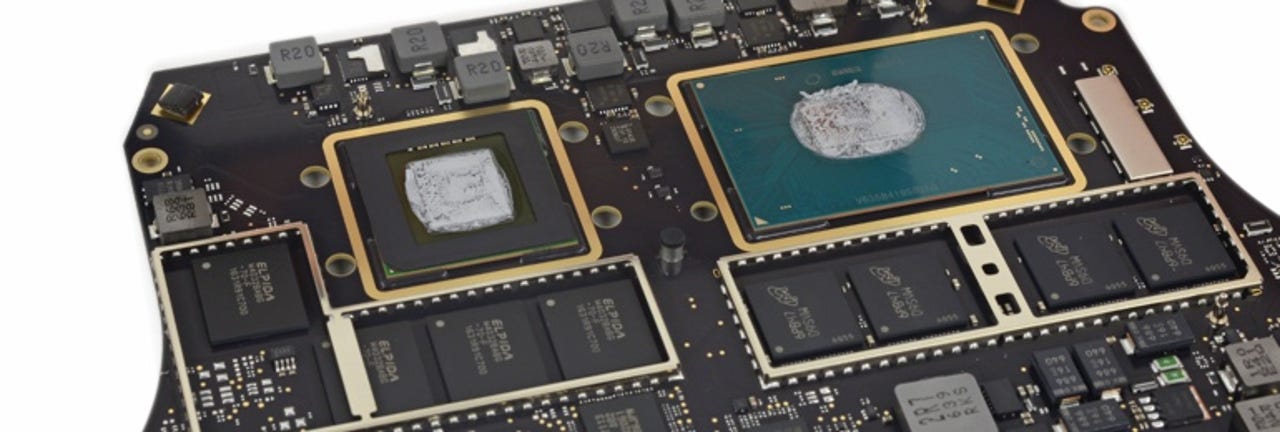Here's why Apple is looking to break free from Intel


CPU and GPU inside apple's 15-inch MacBook Pro with Touch Bar.
So, a Bloomberg report claims that Apple is working on "a new chip for future Mac laptops that would take on more of the functionality currently handled by Intel Corp. processors."
Must read: 7 things you need to know about Apple (Q1 2017 edition)
Featured
Here, in a nutshell, is what Bloomberg got from "people familiar with the matter":
- The chip is similar to the T1 chip currently used to power the Touch Bar in the new MacBook Pro
- Internally codenamed T310
- Will be used to handle low-power mode functionality
- Built using ARM technology
- Will work alongside an Intel processor
Macs already have a feature called "Power Nap" that allows them to wake up when asleep to carry out tasks such as receiving emails and install updates, but the efficiencies of this are related to what Intel can deliver. Since no one knows macOS better than Apple, this makes sense.
But in the longer term, this (if it is true) is clearly the beginning of the process of ousting Intel from the Mac. This has been something that's been rumored for years, and while Apple would need to leap through a number of hoops to make it happen, in the long term, it seems like a logical direction for Apple to go in.
Not only would it give Apple greater control over the hardware ecosystem, but it would also allow it to better control the processor/graphics chip upgrade cycle. Several insiders have commented on the fact that Apple was displeased that Intel did not have Kaby Lake processors ready for the new MacBook Pro, forcing it to launch a product running old microarchitecture.
By developing its own silicon, Apple could better coordinate macOS and Mac hardware releases to best leverage the silicon -- just as it does with the iPhone/iPad and the iOS platform.
But, ultimately, Apple's dabbling with ARM inside Macs is clearly a move to bring iOS and macOS closer together, and possibly coalesce the two operating systems at some point in the future. I know Apple executives have ruled out combining the iPad and MacBook, but I'm also old enough to remember the late Steve Jobs saying how Apple wasn't interested in getting into the smartphone business while the company was secretly developing the iPhone.
Unifying iOS and macOS into single platform makes sense. Maybe now is not the right time, but in the long run, it's certainly where Apple is headed.
Five things you shouldn't buy from Apple
See also:
- Apple did a lot more than just smash its iPhone sales record
- 7 things you need to know about Apple (1Q 2017 edition)
- iPhone 8 rumors finally suggest wireless charging is on the way
- The key to the success of the iPhone: Power efficiency
- The iPhone decade: Apple's transition from Jobs to Cook
Video: Want a new phone? Here are the 10 best ones